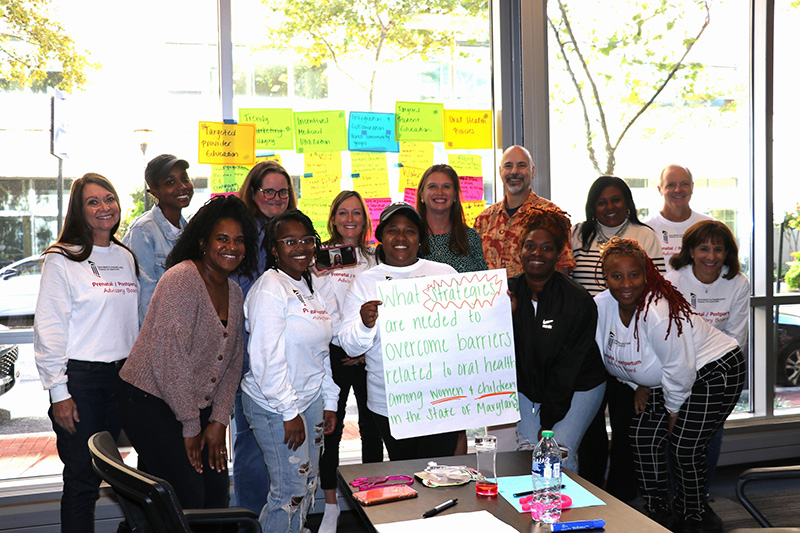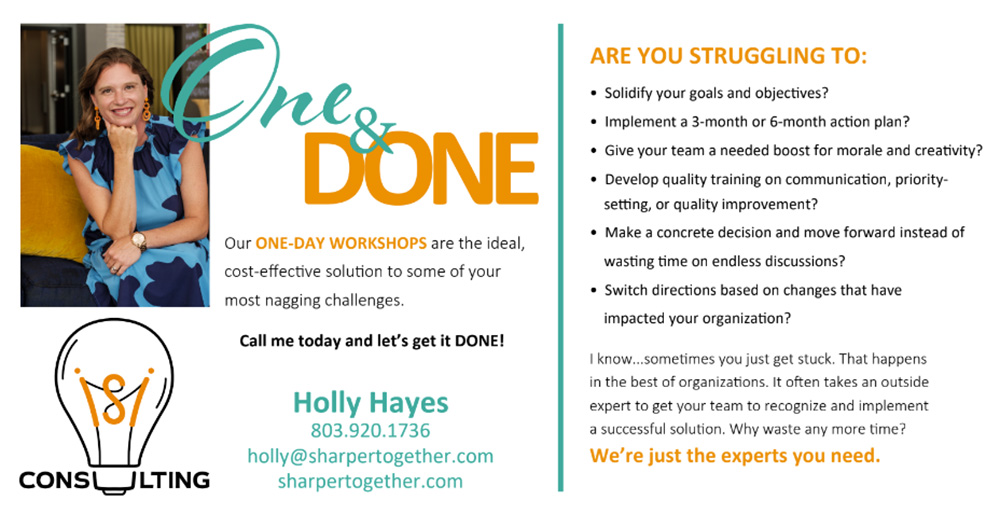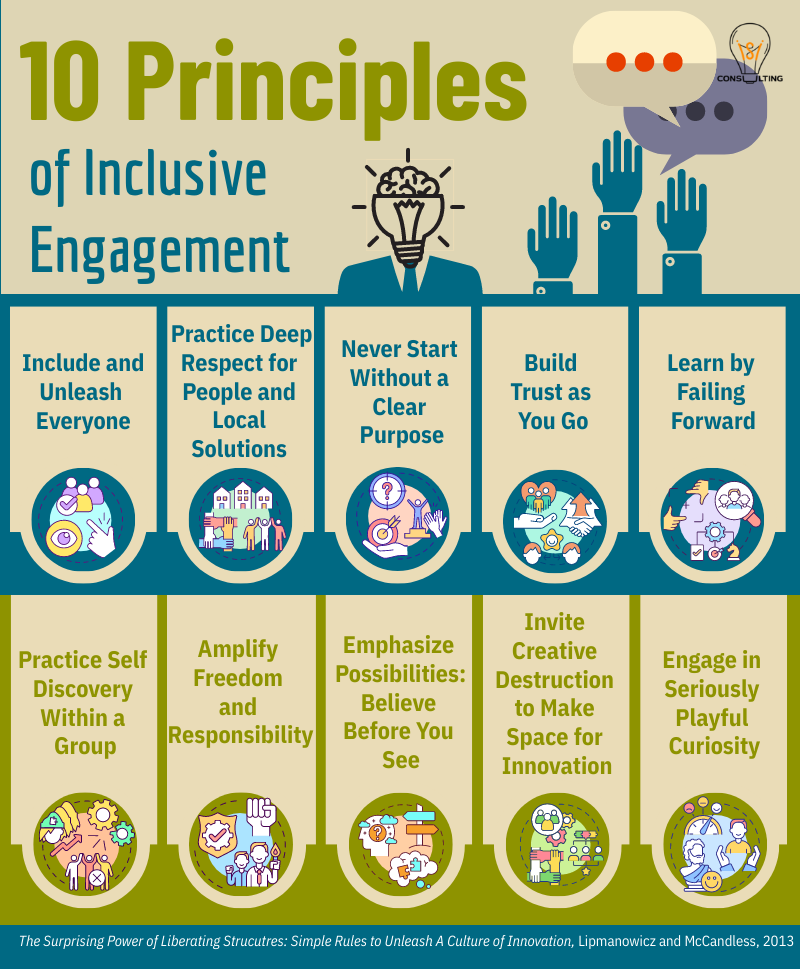
This has been a challenging year for me, both personally and professionally. I had a lot of setbacks…and I mean A LOT. There are still a number of unknowns to be faced, but despite those, I am content. As I look back over the past year, I’m overwhelmed by gratitude and thank God for all of the challenges, lessons learned, and faith-filled moments that made up 2023.
I’m writing this right now in Richmond, Virginia, at the same hotel where I was staying exactly one year ago, doing another annual retreat with the same client. And even though I’m the same person – I am definitely not the same person. God has given me the combined gift of change, reflection, and transformation this year. I’d like to say I think it’s one of the best gifts any of us could ever receive.
Have you unwrapped growth? Reflection? Transformation? Unwrapping this involves thinking about what people, experiences, opportunities, or challenges shaped you this year. When was the last time you reflected on where you are now and where you used to be? It’s not about looking to see if your bank account grew (mine didn’t) or if you are skinnier (didn’t happen to me, either). Who had the most impact on you this year, and what was that like? What experience will you never forget? When are you showing more kindness or patience? Where have your thoughts shifted? How are your actions different? Even though we are aging with each passing year, God is “doing a NEW thing” in us (Isaiah 43:8).
I’m busy right now – like you – getting gifts under the Christmas tree for our family and friends, planning all those special meals, and prepping for a calendar filled with events. Even with all of the busyness, I want to encourage you to take time to reflect this holiday season. Unwrap that special gift of growth.
Stay Sharp,

Holly Hayes, President & Founder
ISI Consulting

Almost since the beginning of time, seasons have regulated our lives. Planting and harvest, heat and cold, flood and drought marked time for millennia. And we humans marked each of those seasons with particular holidays that reflected the rhythm of life. Sadly, in our fast-paced, always-on modern lives, we seem to rush nonstop from season to season, holiday to holiday. We race from Halloween to Christmas with hardly a pause. But I think it’s crucial to resist the rush and take the time to truly enjoy…Thanksgiving.
Thanksgiving – for all the “gobble till you wobble” hype – is the holiday built around gratitude, reflection, and appreciation. I know that for a lot of us, 2023 has been a challenge. Inflation is up, budgets are tight, and news from around the world is almost all bad. It can make us want to jump headfirst into the joy, hope, and excitement that Christmas brings.
I want to encourage you to acknowledge that Christmas is on the horizon, but let it come in its own time. Refrain from rushing the season, and let Thanksgiving have its time center stage. Why? Because I’m convinced that taking a deliberate pause to appreciate life’s blessings will change your heart and mind. Find joy in the simplicity of Thanksgiving traditions…pulling out that special turkey platter, making dressing from your grandmother’s recipe, welcoming someone new to the family table. Take time to build some new traditions that foster connection, gratitude, and reflection to create lasting memories. Many people use a gratitude list or cards to spark conversations around the table. Snap fun photos and actually print them out to frame and have as keepsakes. Or haul out an old family photo album and share memories with everyone. Finally, reflect on the past year and your personal and professional growth, acknowledging the fruits of your efforts. You’ve worked hard over the past months, and although I’m sure there have been challenges, you’ll be surprised at the many victories you’ve achieved.
Savor Thanksgiving for its unique qualities of appreciation, gratitude, and reflection. In doing so, you’ll cultivate a deeper sense of fulfillment and prepare yourself to fully embrace the joys of Christmas. You’ll be glad you made the effort to resist the rush.
Stay Sharp,

Holly Hayes, President & Founder
ISI Consulting

Yep…I said it. Quitting may be the most under-utilized resource in your organization. And I’m telling you to add it back in rotation. Dr. Julia Keller’s book entitled Quitting: A Life Strategy (2023) goes into great detail about how grit and perseverance has been put on a pedestal in our American culture and quitting is deemed as the “forbidden fruit.” Work hard. Don’t give up, no matter what. Quitters never win. Success comes to those who work hard. Think bigger, work harder. Go the extra mile. Do any of these sound all-too familiar? Are they parked on a poster on your wall?
I’m not saying we don’t need to work hard. The real question is…are we working hard at the right thing?
A friend of mine once told me one of the best pieces of advice she ever received was “Learn to say NO to the not-so-good things so you can say YES to the best things. And then don’t back away from your NO.” She said it taught her that her time and talents were valuable and deserved to be devoted to the best options available. Over several decades, it has saved her from lots of mistakes, regrets, and wasted efforts.
That’s why I think we need to reframe quitting. Quitting is learning to say “no” to something that isn’t working so we can say “yes” to a better option. Sometimes, we don’t want to quit because we think if we just work harder or longer, things will change or start working. But all too often, they simply don’t. We need something new. Let me put it this way. Let’s say you have a car with a beautiful paint job, a tank full of gas, four new tires and a V-8 engine…but the transmission is broken. You can sit in your driveway all day with the engine cranked and your foot on the gas, but you’re not going anywhere. And you might be able to install a new transmission, but if the car is 20 years old, is it worth the investment? Maybe it’s time to give up on that clunker and get another vehicle.
As Keller so eloquently states, “perseverance isn’t always the best strategy.” Quitting doesn’t mean that we are a complete moral failure – it may mean we are using our brain and moving in the right direction. We are letting go of whatever isn’t working so we have time to devote to something that will. But that can be hard to recognize and accept. Sometimes, if we are really honest, we hear our inner voice say we need to quit, but we ignore it. As a result, we can get overstressed, burned out, injured, or…insert your favorite bad outcome. If that describes you, take some time to consider if it’s time to quit.
Don’t worry…I’m not recommending you quit whatever and then just binge mindless TV and eat cheese curls all day. That’s a recipe for bigger pants, not success. I’m recommending you consider quitting X (job, project, idea) and then pursuing Y (your alternative job, project, idea). Often times, we need to “think beyond the quit”…and that, my friend, is strategy. Strategy involves hard work paired with the right goal, and that always leads to success.
Let’s make sure we’re all working hard at the right thing, and if not, let’s QUIT. Better options are out there.
Stay Sharp,

Holly Hayes, President & Founder
ISI Consulting
PS – Sign up for our upcoming on-line facilitation trainings.

We’ve recently overhauled the ISI Consulting website, and in the process, I’ve become very familiar with the term URL. It stands for Uniform Resource Locator and refers to a particular address – a website or even a particular page or form or photo – on that marvelous thing previously known as the World Wide Web. (As in www.sharpertogether.com, anyone?) Over the past three years, we’ve all spent more and more time in URL world , as we moved from in-person work to virtual meetings to a hybrid work environment. It’s been a monumental shift, and employers and employees, sociologists and psychologists alike have noticed some profound changes.
Our attention spans are shorter. Our people skills have faded. Work/life boundaries have blurred, sometimes leaving us with the sense that we’re always at work. New hires don’t know their colleagues and often struggle to grasp the organization’s culture. It’s harder to have those casual peer-to-peer chats in a virtual world. And finally, it can be difficult to mentor or be mentored by a colleague when you seldom see each other in person.
Now, I’m not dismissing the joys of URLs. After all, where else can you take a tour of one of the world’s greatest art collections, watch the goofy antics of baby owls, and buy a nifty new coffee maker, all from the comfort of your couch? Seriously, though, virtual work has had some profound benefits for all of us. We’ve saved time – and tempers – by avoiding a stressful commute every day. Parents appreciate the ability to take their kids to sports and school activities and still finish up work later. We can gather colleagues from across the country for a meeting without ever having to face the specter of airport lounges and cancelled flights. And let’s be honest…stretchy pants are really comfortable.
I do, however, think we ought to spend more time IRL. That’s In Real Life for those who don’t keep up with the latest acronyms. Real people in real rooms creating real accomplishments. We need strategic face-to-face meetings where we can tackle issues and hammer out solutions. We need those in-person team building exercises that strengthen bonds and create true culture. We need to ensure diverse perspectives are brought to the table and everyone’s voice is heard. We need the creativity and insight that come from real people working together.
None of us has time to waste on wasted meetings. At ISI Consulting, we want to help you make the most of your time, whether it’s IRL or virtual. We’d love to chat with you about your organization and how we can work together to accomplish your goals, so give us a call.
Stay Sharp,

Holly Hayes, President & Founder
ISI Consulting
PS – Check out our updated Organizational Development section on our website.

“One and Done” can mean a lot of things. It can refer to a college basketball star who just played their freshman year before heading to the NBA. It might be something you do so well the first time that you never need or want to do it again. (Marriage, yes…sweeping your kitchen floor, no.) Some people use the term for a workout that gets you permanently in shape in just one week, Oreos not included.
At ISI Consulting “One and Done” is all about our one day workshops. We do a LOT of them, with organizations small and large. ONE DAY, you might wonder? Just how much can you accomplish? A great deal, it turns out. Especially if you’re working with experts in problem-solving.
If you’re struggling to solidify your goals and objectives, make a concrete decision and then implement an action plan, or switch directions based on changes that have impacted your organization, you can make significant headway in just one day. If you need to develop quality training on communication, priority-setting, or quality improvement to bring your team to the next level, one day will get you well on your way to success.
There’s just one thing you need to remember…if you could have done this on your own, you already would have. Even in the best of organizations, sometimes you just get stuck. And then it takes an outside expert to get your team back on track. We’re just the experts you need, so why should you waste any more time. Call today, and let’s get this “One and Done!”
Reach out directly to Holly Hayes at 803-920-1736 or holly@sharpertogether.com. We can quickly schedule a brief discovery call and get your “One and Done” on the calendar.
Stay Sharp,

Holly Hayes, President & Founder
ISI Consulting
PS – Check out our updated Who We Are section on our website.

Feel free to forward this on to someone you think needs a One-Day Workshop!

Brainstorming is defined as a group creativity technique by which efforts are made to find a conclusion for a specific problem by gathering a list of ideas spontaneously contributed by its members. Pretty much, it involves “throwing ideas at the wall and seeing what sticks,” as the marketing people put it.
While we’re all familiar with brainstorming sessions, did you know that the concept was actually developed in 1939 by an advertising executive? That’s almost a century ago! More than a few things in the world have changed in that time, and I think the entire idea would benefit from serious updating.
I’m convinced that group brainstorming is broken and that there’s a better way to get results. We used a new method to develop an incredible plan of action (Operation TURBO) for our ISI team, and I’m convinced it will help your organization generate fresh ideas quickly and easily. I call it the Concept Conveyor.
Here’s how it works.
1. Map out the problem and agree on an initial target. (For ISI Consulting: We need to increase our gross revenue by 30% to keep up with increasing expenses.)
2. Share the problem and target with your team and then give them protected time to work independently to come up with possible solutions. Give them the freedom to use whatever tools suit them best. (Our individual team members used different approaches, including one-on-one meetings, web searching, reading trend analyses documents, drawing, and praying).
Why on earth did we do this when our team all likes one another and gets along?
We know that individuals working alone generate better solutions than groups brainstorming out loud. Working alone offers time to do research, find inspiration, and think about the problem. And the pressure of responsibility that comes with working alone often spurs us to our best work.
3. Schedule a meeting to share the concepts everyone has developed, and then decide what ideas you would like to pursue together as a group. This is where the Concept Conveyor starts moving! (Our ISI Consulting team members were giddy to share our ideas, because we each knew we’d had the time to think and develop good ones. In fact, I was told to be quiet and to stop interrupting!) Once everyone shared their best ideas, we discussed all of them and mapped everything out in the hallway to come up with our immediate strategy. The strategies we developed have teeth to them, because our team members had time to research, think, make some phone calls, and really go deep into what steps were needed. They weren’t simply throwing random ideas at the wall.
4. Finally, type up your masterpiece of ideas and decide when you will meet next. We assigned each individual as the “lead” on a particular strategy. If you’re a larger organization, you may assign a team as the lead. Just remember that ownership brings results.
Why don’t you give the Concept Conveyor a try? It’s just a matter of slowing down in the beginning to get a better result in the end.
Stay Sharp,

PS – Check out our updated Who We Are section on our website.
We know you can’t do this alone. If you could have, you already would have. You need an outsider’s invaluable insights to help sharpen your vision, hone your team’s skills, and map out a plan for action. Someone who provides the spark that gets you fired up and moving. We can do just that. And once we’ve gotten you moving in the right direction, we’ll be out the door…so you can stay busy advancing your mission. That’s how ISI Consulting accomplishes success.
It’s time to level up.
Stay Sharp,

Holly Hayes, President & Founder
ISI Consulting
PS – Join me for a virtual ToP Methods 3-day facilitation training. More information and Registration.

stroll:
similar: saunter, amble, wander, meander, ramble, dawdle, mosey
There once was a time when people strolled. They ambled, moseyed, meandered. No running, no checking the heart rate monitor. No counting steps. No set schedule, and most likely no set destination. They sauntered down city streets. Wandered through parks. Rambled across fields of wildflowers. Meandered around the neighborhood on a quiet walk after Sunday dinner. There seemed little or no purpose to their strolling.
Except there was a purpose, even if people didn’t recognize it. Strolling is essentially active thinking. Because you’re not focused on one thing (your heart rate, for example) it allows you to become aware of many things, and you begin to notice your surroundings. Strolling engages all our senses…sight, smell, hearing, touch, taste. You might see the flash of a bluebird, smell the aroma from a nearby bakery, hear children laughing in the distance, feel the leathery leaves of an agave plant, or even taste the salt spray from the ocean. Because of the slow pace of a stroll, you actually have time to take in and enjoy those experiences. You get to process the information your senses register, and then your brain has the time to make connections, to see patterns, and to learn.
Ample evidence shows we spend far too much time today scrolling on our computers and on our phones. The constant onslaught of information, notifications, emails, texts, updates and calls simply overwhelms our neural networks. That deluge impairs productivity, creativity, and most important, the restorative power of sleep. We even take the world with us as we move around…a phone and ear buds are now part of our daily routine.
Not long ago, I got overloaded by work issues, family challenges, the state of the world, and about a dozen other things. In frustration, I just dropped my phone on the kitchen counter and went outside for a short walk. Within a few minutes, I realized my head was beginning to clear and I was able to relax and enjoy the sunset. I noticed the sunlight on clouds, the flowers on neighbor’s porches, and the smell of someone’s freshly cut grass. By the time I returned home, those “monster” problems were starting to shrink, and I even had some creative ideas about how they might be solved. I was more relaxed and mentally energized. A simple stroll had shifted things.
If a simple saunter could change things so quickly for me, I’ll bet it can do the same for you. And so, I want to issue a challenge to you this week. Sometime over the next five days, take time for a stroll. All alone, with no agenda. Just let your body and your mind meander, wander and dawdle. Focus on your senses instead of issues. Let your brain do what it does best…just process and think. I’m convinced you’ll be amazed at what pops up.
Stay Sharp,

Holly Hayes, President & Founder
ISI Consulting

Inclusive participation matters. There is a mound of research that shows that engagement drives greater productivity, ownership and work quality. What are you doing to include and engage everyone to unleash problem solving in your organization? What are you doing to advance innovation and achieve those aspirational outcomes?
I know, it’s August. Summer is winding down. Vacations are over. School is starting back. And it’s still HOT. But guess what…August is the perfect time to dig deep and make small shifts in your meetings, interactions and engagement with your partners. I’m not asking for monumental change as we close out summer…I’m just asking for all of us to see what we can do to amplify the wisdom of others in the room. Because small shifts now can reap great benefits in September and beyond.
Below is a list of ten principles of inclusive engagement for you to consider. Which one do you want to experiment with in August? Just try one and see if it doesn’t improve your organization in some significant way.

I’d love to hear about your successes. But if you are struggling with one of these, the ISI team would be excited to help you. Set up a time for a chat and we’ll provide you with a FREE tool or resource to help you out. Thanks for being a partner and friend to ISI Consulting.
Stay Sharp,

Holly Hayes, President & Founder
ISI Consulting
PS – Join me for a virtual ToP Methods 3-day facilitation training. More information and Registration.

Have you ever heard of the one-inch rule? It means that stopping one inch short of your goal is just the same as never starting. It means that you are laser-focused and present until the very end, and you are not going to lose sight of your goal or stop until you have crossed the finish line. You follow through, without compromising and regardless of what else is going on.
How often do we lose focus in that last inch? You’re almost there, and it seems you can coast across the finish line. But you can’t! A NASCAR or Formula 1 driver keeps their foot to the floor until the finish line is crossed. A champion marathon runner puts as much effort into that last stride as they do the first. A winning golfer is just as careful lining up their last putt as their first. You get the picture…the end is just as important as the beginning.
Your team may have worked for the last five months on a project and in the last week, the team loses momentum and nearly disbands. Don’t let that happen! Do whatever it takes to keep holding on to the gains you’ve made and rally your team forward for that last inch. As a leader, it’s your job to spend time encouraging and motivating your team to follow the one-inch rule. The end is in sight!
I’ve often felt that the media has it wrong when they cover a story. Press covers the beginning of things – ribbon-cuttings, campaign launches, factory openings, or whatever. There are banners and balloons and lots of enthusiasm. But the media rarely gives as much fanfare or attention to the end of things – closing out a project, keeping a team together for years, or successfully meeting milestones. Don’t believe me? Try getting your local media to cover the fact that a manufacturing plant has gone one year without a workplace injury. They’re far more likely to cover the opening of the newest fast-food outlet.
So that leaves it up to us. As leaders, we need to be cheering folks who follow the one-inch rule. The ones who keep moving forward until they cross the finish line. Those teams who commit to taking this goal or project through that last inch, no matter what happens. Let’s favor finishing over starting, and winners over the beginners.
Stay Sharp,

Holly Hayes, President & Founder
ISI Consulting